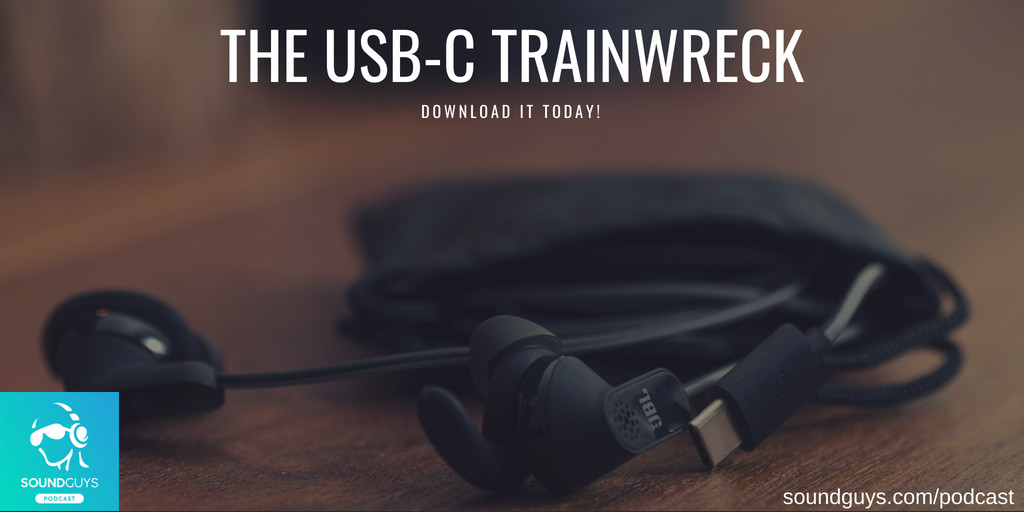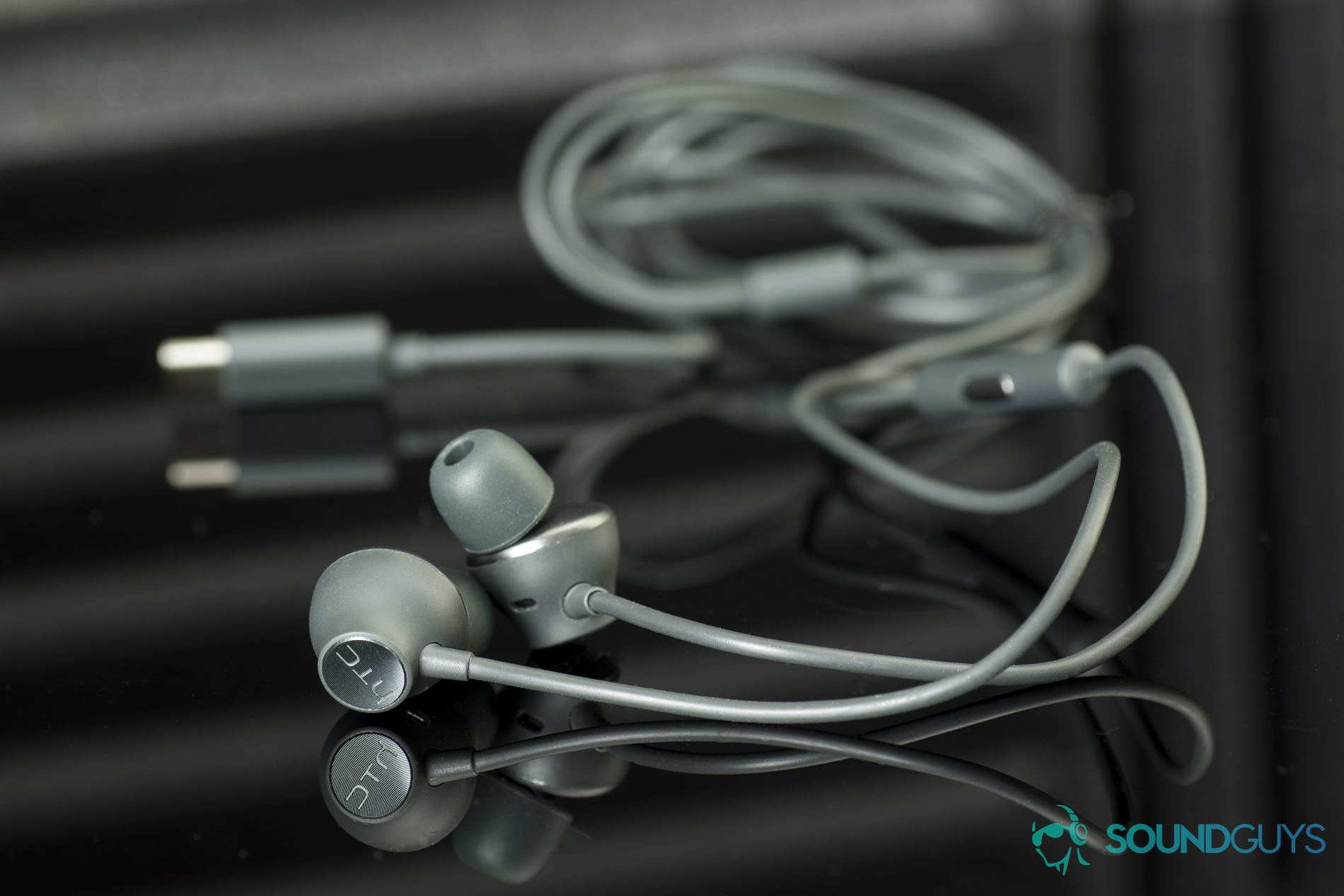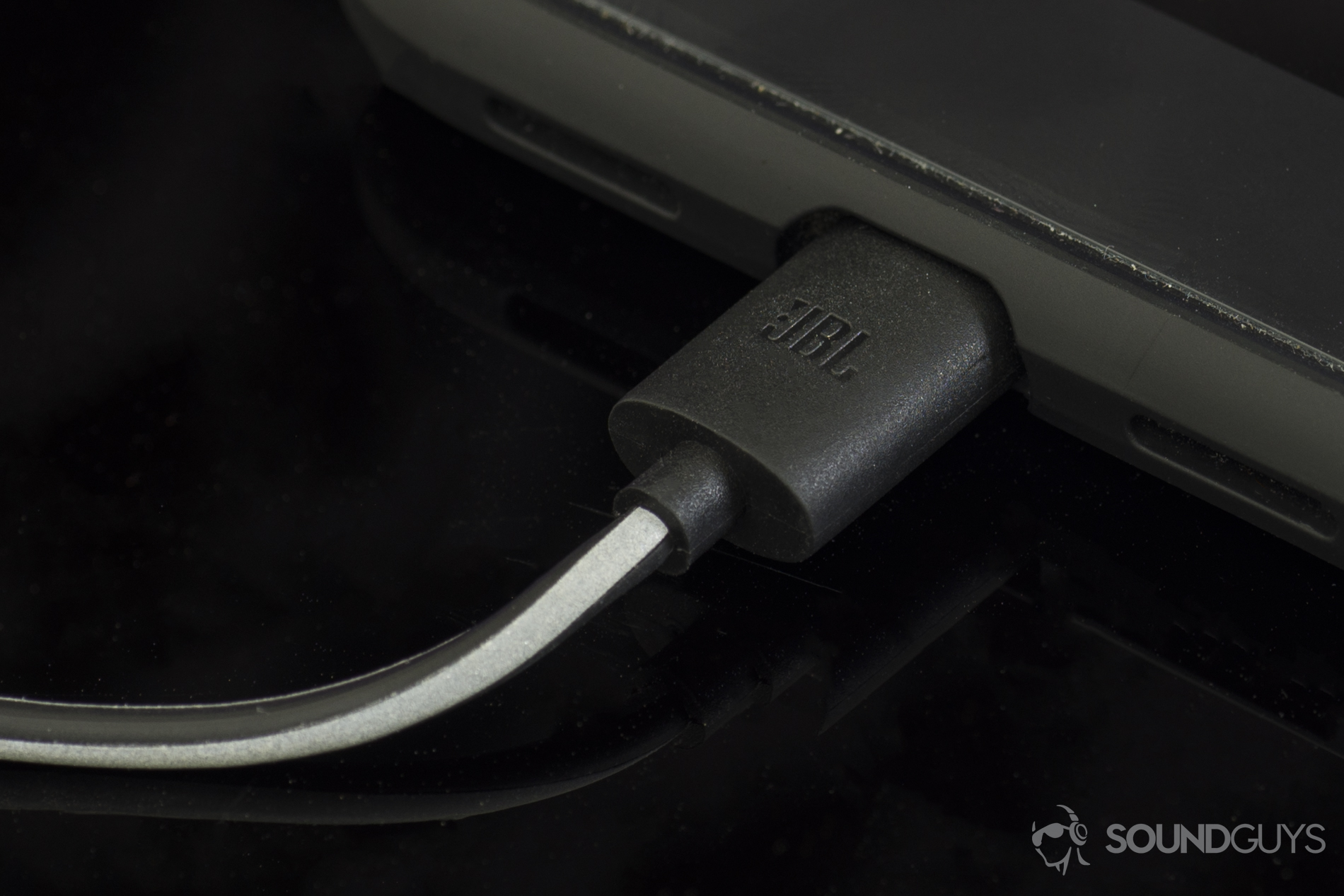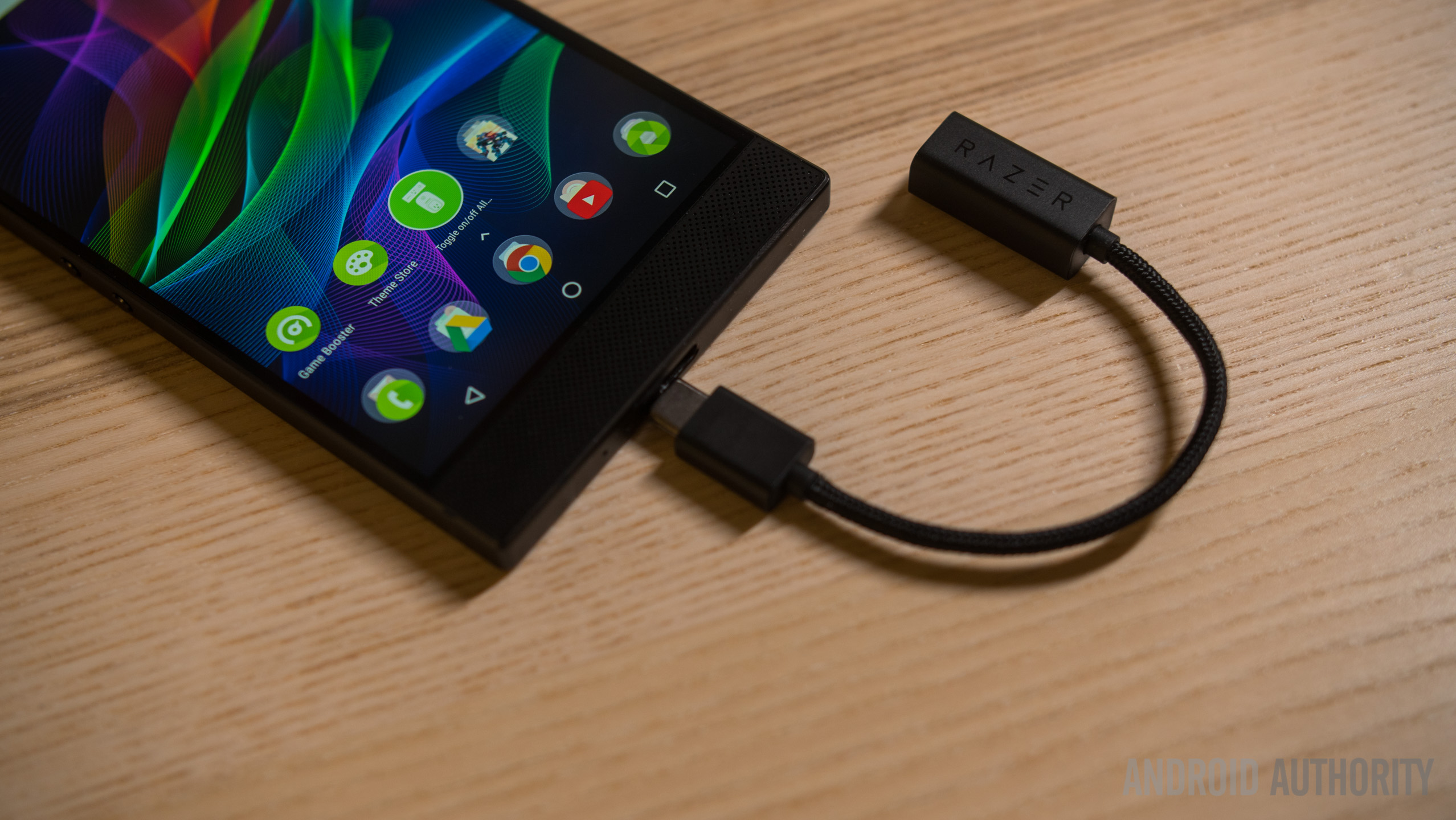All products featured are independently chosen by us. However, SoundGuys may receive a commission on orders placed through its retail links. See our ethics statement.
Podcast: The USB-C Trainwreck
July 16, 2018

Check out the SoundGuys Podcast on iTunes! This episode “The USB-C Trainwreck” can be downloaded here. Below is a full transcript of the podcast. Be sure to subscribe to iTunes for more episodes!
If you’ve never heard of USB-C audio products, don’t worry, you’re not alone. In fact, there are so few products out there that you’re probably not even paying attention to them.
The move away from the headphone jack sent headphone manufacturers into a panic, and in order to bypass paying out the nose for licensing to use Bluetooth, some companies opted to try their hand at using the brand new USB-C standard that’s supported by all the new Android phones.
This port isn’t like the old microUSB. No, it doesn’t matter which way you plug it in, and it’s capable of transmitting a ton of data at once. Seems like a great option, right? Well… no. It isn’t. Expect the category to die out soon. Today I’m joined by editors Adam Molina, Lily Katz, and also Rob Triggs from our sister site Android Authority. Last month he wrote and article detailing USB-C’s issues from the smartphone side of things, but as someone who is an audio engineer by education, he’s got a very expert view on the subject.
Back when I was at University, I studied sound engineering which covered a range of topics from electronic design of amplifiers and that sort of stuff to digital audio processing, acoustics, speakers and rooms. Pretty much everything audio related, we did a module on it.
While it’s hard to pinpoint exactly where this situation started, it’s very easy to see when it became a problem. The issue started when Apple killed the walkman with the iPod, then kicked into overdrive when Apple bought Beats.
That may sound a little bizarre, but bear with me, it’ll be easy to see where this is going in a minute. To start, you have to understand that tech companies—at least the big ones like Apple—operate more like financial giants like you’d find on Wall Street rather than simple product manufacturers. Facebook, Google, and Apple all have ungodly sums of money, and use that wealth to improve their position in other areas.
While we already covered the death of physical media at the hands of the iPod and MP3 in our first episode, the consequences of that event are still unfolding. The iPhone ate the iPod, and smartphones became the dominant vehicle for music lovers to consume audio. So where do you go if you dominate the market in your category, and want to give your stockholders some growth? For Apple, that meant taking over another industry it previously didn’t have much footing in: headphones.
![Beats Studio3 Wireless[1] You'll find a few logos on these headphones.](https://www.soundguys.com/wp-content/uploads/2018/02/Beats-Studio3-Wireless1.jpg)
From 2010 to 2016, wired headphones were absolutely mopping the floor with Bluetooth cans by about 83-17%, but the latter have a much higher margin. But by 2016, Bluetooth headphones commanded more earnings than wired headphones did even with the giant disparity in unit sales, and it’s largely due to high margins on this technology. Especially when you consider that for the $100 and over market, Beats had a near 60% market share.
So, naturally, Apple bought them for $3 billion. When you consider that 50 cents on every dollar spent on all wireless headphones go to Apple-owned business like Beats, the picture becomes a lot more clear: This was a hostile takeover of the headphone industry, not by buying out stock, but creating a monopoly.
By that act alone, Apple now controls most of the new income to be had with headphones. But there was a final middle finger to throw in order to guarantee future sales from beholden consumers. Two years after buying Beats for $3 billion,
Some people have asked, why we would remove the analog headphone jack. Well the reason to move on – I’m going to give you three of them – but it really comes down to one word – courage. The courage to move on, to do something new, that betters all of us.
(crowd booing)
By doing this, Apple took the most popular smartphone—and by extension, most popular vehicle for music consumption—and forced consumers to make some tough choices about their existing headphones. They could either settle for a dongle (which for many reasons is a very bad idea), break down and buy Bluetooth headphones (most likely shoveling more money to Apple), or jump to the Android ecosystem.
Although a few headphones like the Audeze EL-8 used a lightning connector, that category never really took off. Consumers complained about being unable to charge their phones while listening. On top of that, the new lightning cable introduced the main drawback to using a proprietary connector: not being able to use the headphones with anything but a narrow range of devices. And for most people, that was just their phone.

But then Android phones started ditching the headphone jack too. That versatile, cheap connector that not only offered impossibly-higher quality than wireless listening was dead. But the optimists held out hope for the USB-C ports becoming the new connection standard… So far, it’s looking more and more like the failed lightning headphone category.
That’s not because the Type-C port doesn’t work – okay, well kind of. But at least it’s universal on all USB Type-C devices and not limited to just one phone right? Well, no. As much potential as USB Type-C has, there are still some technical drawbacks that are holding it back when it comes to audio. Like manufacturer’s completely ignoring the fact that it’s supposed to be universal. HTC actually released a pair of Type-C headphones called the USonic Adaptive Audio headphones. The kicker is that they only work with HTC phones – and the Huawei Mate 10 for some reason. So not only will you not be able to use them with your computer, laptop, or anything else really. You also won’t be able to use them should you switch phones at some point in the future. But as much as I hate that decision, that isn’t what we’re talking about here. We’re talking about technical limitations.
There’s a few reasons, but I think one of them is the sheer complexity and expense of moving to USB Type-C. And not just in terms of the port – it’s obviously a bit more complicated – but there’s a lot of IC block, integrated circuits that you need just to get it to work. You have to detect the cable orientation, manage power delivery, data communication, and then you’re moving the DAC and amp chips on this side of the connector as well. And those thing – ok, a few extra dollars on the price, but you have to consider that you also need experienced programmers and engineers familiar with digital circuitry and USB standards that a lot of headphone manufacturers haven’t had to deal with previously.
Because believe it or not, that isn’t the only issue with the USB port. Not only are the headphones that are made for them not universal, the cables between them aren’t even compatible. Rob Triggs mixed and matched cables and charging bricks from different phones that all charge via USB Type-C. If we’re taking it back to second grade science, the hypothesis would be that it doesn’t matter which combination of cables you used. They’re just cables right? Wrong.
It seemed to be almost universal that everyone had experienced at least one of the problems that we talked about there. Be it charging with different plugs, having different cables not working, you know, plugging into your laptop or your PC and getting different levels of power and data speeds. It seems like everyone has experienced that which is reassuring from my point of view, but disappointing when looking at the USB-C ecosystem.
Charging time dramatically decreased if you used anything but the officially provided Type-C cable and brick that came with the phones. And that, by definition, isn’t what universal means. Intercompatibility is the last thing these companies think about when it comes to turning a profit. Why should LG give Samsung cables the correct amount of power when Samsung cables don’t do the same thing for LG? That’s the fundamental problem. When everyone is competing for a digital standard like Type-C, nobody wins because nobody has a better option. But why is this the case? If you look at USB 2.0 which was the main standard before, you’ll find that there were four pins used in data and power transfer. In USB 3.0 that was upped to 8 pins, so if you have a USB Type-C to Type-A cable, whether you have 2.0 or a 3.0 matters a lot.
Plus, USB Type-C cables aren’t just for charging. As we’ve mentioned they can be used for audio transfer but also for extra features that used to be handled by different cables altogether, like HDMI and Displayport. All of the Alternate Modes use the Power Delivery Structured Vendor Defined Message (VDM) to know when to enter or leave these different special modes. And if your cable doesn’t support that, then it’s not going to do much more than charge your phone. Slowly. And this is up to manufacturers to implement, so even though the USB Type-C cable that you might have gotten with your nice new monitor supported this, but the one you got on Amazon probably doesn’t. To save a little money, it’s not uncommon for multi-port devices to only offer a single Power Delivery port dedicated to charging the device. So not all Type-C connectors on your new laptop were created equal.

So why is this even a thing? Why is a universal cable that is the result of a ton of hard work from some of the top engineers at some of the top companies in the world so hard to get right? Manufacturing. It’s way easier to throw a fake USB approval sticker on something. Chances are most of these companies won’t get caught making these trash USB cables, so why bother getting them approved? Plus, it all comes down to demand. If they can make a quick buck from producing Type-C cables, they’re going to.
So, when it comes to investing in stocks there are a wide array of options. You have your ETF, ADR, mutual funds, individual stocks, bonds, and so on. With each investment, there’s a varying degree of risk, so it’s good to realize that—unlike the reliable, safe pick of 3.5mm headphones—USB-C is a volatile choice right now. Like Apple’s positioning of the lightning adapter as the end-all, be-all of connectors, USB-C is here to fix what isn’t quite broken.
Nice segway
Remember in 2001 when inventor Dean Kamen promised to revolutionize personal transportation with the Segway and ended up giving us The Paul Blart-mobile instead? Well, USB-C is bringing us the same lofty promises, and also the same ridiculous outcome. Does that mean that you should avoid USB-C headphones altogether? Well, as of now, yes, but there’s still the chance that USB-C will be ready for the big time… that time just isn’t now. As for the Segway, well, the only place that’s going is on a city tour full of unenthused children and exasperated parents.
That said, we’re not here to leave you hanging on such an abysmal note. To avoid wasting money and feel more secure in your investment, there are true wireless earbuds and even Bluetooth headphones. If you’re that committed to the USB-C lifestyle, you can even pick up Google’s dongle. Sure, it’s not the prettiest solution, but at least you get to join the hordes of tweeters… twitter-ers…—whatever, you can join all the other twitter users who are talking about that “#DongleLife.”
While we all anxiously await USB-C’s transcendence from technological nuisance to universal adapter, we can become and are becoming more entangled with true wireless technology. Though we would have been hard-pressed to encourage the use of these bulbous ‘buds back in 2015, three years is plenty of maturation time when it comes to technological advancement.

It’s true that the initial Bragi Dash were overhyped and overpriced, but today we have great options like the Jabra Elite 65t or the Samsung Gear IconX. And, yes, let’s address the elephant in the room that is the plague of dubious connectivity. Like USB-C, true wireless headphones have a long way to go. Heck, we yearn for the day that a pair of true wireless earbuds that can maintain a reliable, stable connection are the standard rather than the exception. But, unlike USB-C, true wireless technology has made a lot of ground since its debut, and there’s no indication of slowing progress.
However, if you’re still hesitant about spending $100-plus on a pair of true wireless earbuds for your USB-C-only phone, we can’t blame you. It’s a lot of money to shell out on something that still struggles with the most fundamental aspect of wireless technology: connectivity. If that’s the case, you may find that Bluetooth headphones or earbuds are the way to go. Not only are they more economical by providing better sound quality for the price, but they don’t require one earbud to relay information to the second. Instead, the buds are a single unit, and they receive information simultaneously.
Maybe one day we’ll come back and talk about the ubiquity of USB-C and the antiquity of the headphone jack, but until then, if you must navigate the world of USB-C, grab a pair of Bluetooth or true wireless earbuds instead.
Maybe someday soon the USB-C audio market will improve, but all signs point to a bleak end. In the meantime, we here at SoundGuys recommend you write your favorite tech companies and demand the return of the headphone jack, or at the very least, check out our recommendations for Bluetooth headphones over at SoundGuys.com. We do all the hard work for you, so anyone looking to make the leap to wireless can get the right product the first time.
That’s going to do it for this episode of the SoundGuys Podcast. This was our fourth episode now, and now that you’ve heard from us, we’d like to hear from you. First and foremost, we’d love it if you’d leave a review on iTunes, Stitcher or wherever your get your podcasts. We also want to hear from you directly, so email us at [email protected] or hit us up on twitter and instagram using the hashtag #soundguyspod.
From all of us here at Soundguys, happy listening.